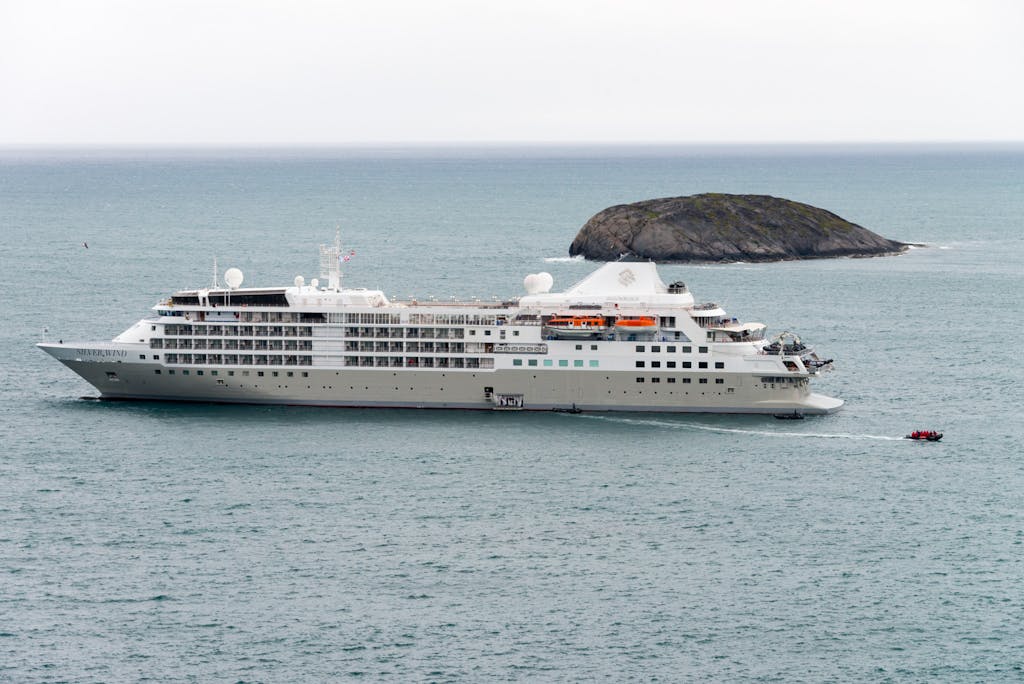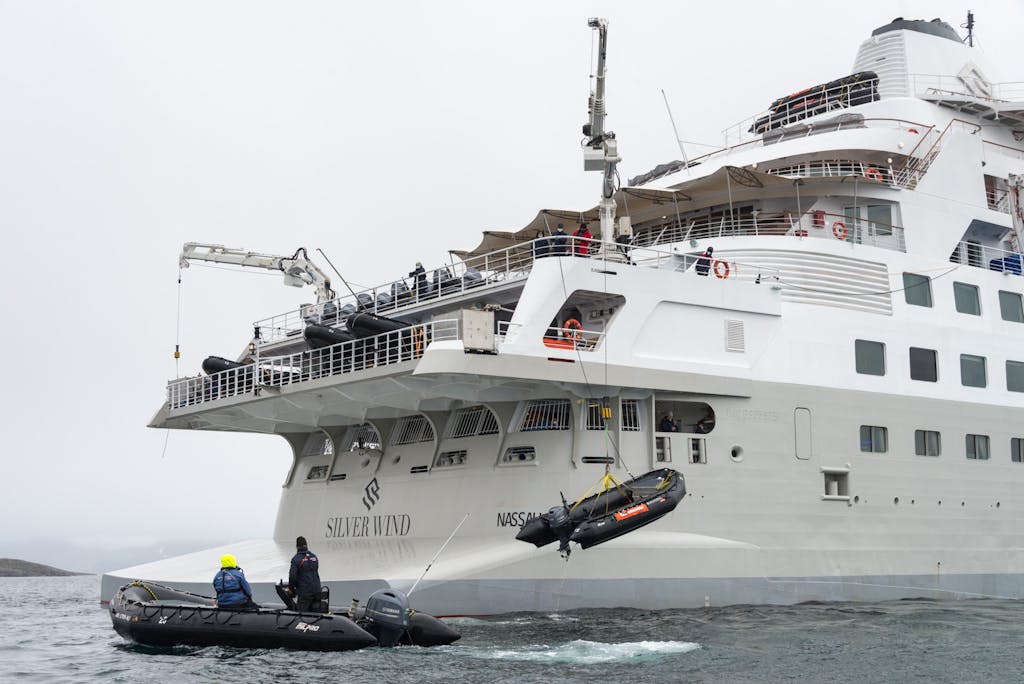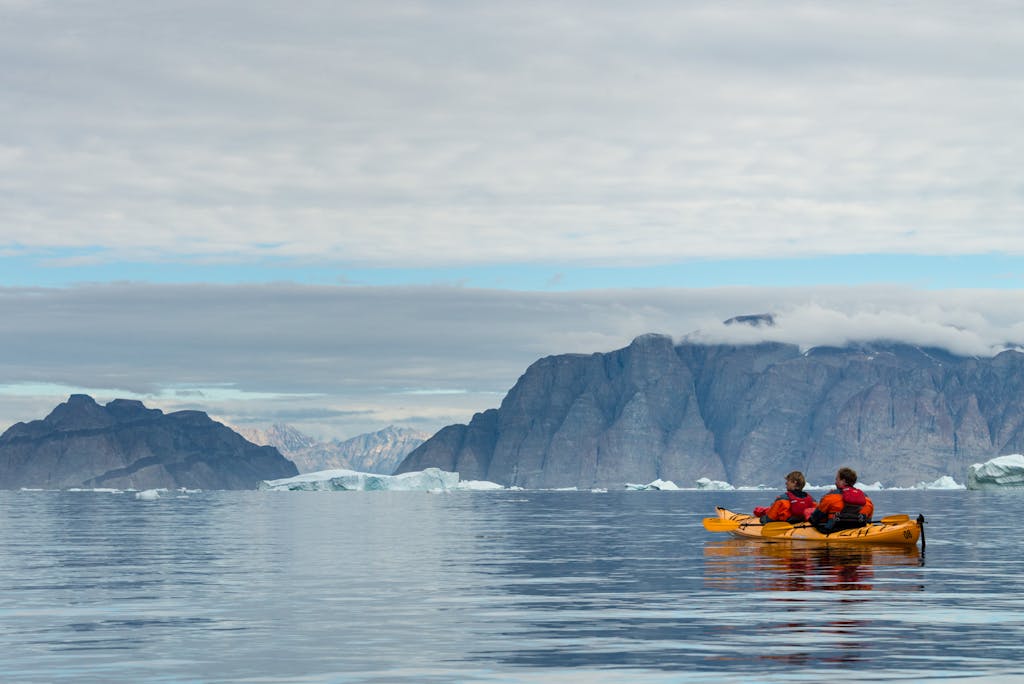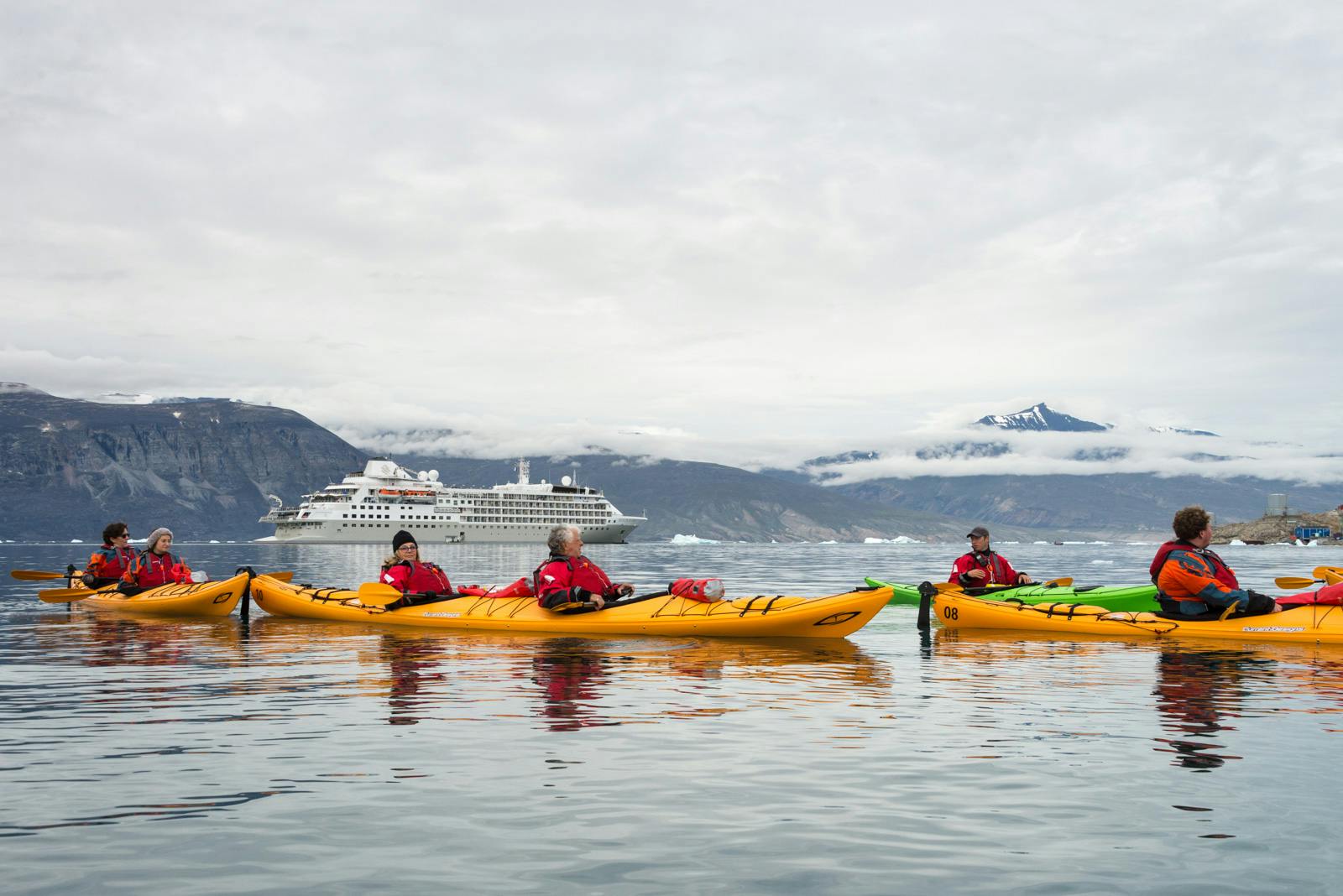How Silversea is Elevating Luxury Travel with Silver Wind, Cloud and Endeavour
The luxury of expedition cruising once was defined solely by what transpired off the ship. Onboard, accommodations featured twin beds bolted to the floor or pushed against a cabin wall, small porthole windows, a dearth of closets and bathrooms too tight for a shower door or curtains.
This certainly wasn’t luxury travel, but oh my – what sights one could see. From the icy spectacle of the poles to the rich, endemic wildlife of the Galápagos Islands, travelers on expedition cruises brought home memories to last a lifetime. In those days, an eye-popping spectacle was all but guaranteed, but creature comforts were not.
Conrad Combrink, Silversea’s Senior Vice President for Expeditions, Destination and Itinerary Management, remembers those days, but he doesn’t long to re=create them. Combrink knows that today’s travelers can be as comfortable on an expedition ship as they would be at home even as they sail to the epic scenery and wildlife these far-flung destinations still promise.
“For too long, the expedition cruise industry has gotten away with offering products that mean giving up luxury in order to see remote destinations,” Combrink says. “But expedition trips have always been expensive, and they’ve always attracted the higher-end traveler. So if we are targeting a higher-end traveler that is used to flying business class and is used to staying in five-star hotels, why would we not give them the same luxury experience on our ships?”
How Silversea Expeditions began

Silversea entered the expedition cruise industry in 2007 with the acquisition of the 144-passenger World Discoverer. The line hired Expedition Guide Combrink with a mandate to create a luxury product, something that, until then, did not exist
“Before 2007, there was no luxury expedition product,” he says. “To see remote places you had to endure bunk beds and bad food. Many of the bathrooms were shared. Expedition cruising was almost like a rite of passage. So Silversea came in, and we said, ‘There’s no need for people to sacrifice on luxury.'”
When Silversea announced the acquisition and plans for World Discoverer, which was renamed (and still is) Silver Explorer, Combrink jokes that there was derision among the established players at the time. “There were a lot of companies out there that said, ‘What are they doing? Luxury has got no place in expedition.'”
“But the traveler wants that experience,” Combrink adds.
The ship was renovated to bring it up to Silversea standards and eventually Silver Explorer made journeys to Antarctica, the Svalbard Archipelago, Africa, Australia’s Kimberly region and beyond. In time, Silversea proved that prosecco and penguins can mingle quite nicely, thank you very much. (Silver Explorer was sold to an expedition cruising company in 2022 and sailed its last expedition voyage for Silversea in November 2023.)
If most of the industry misread the market in 2007, these days Silversea’s competition, perhaps tipped off by its success, is upping its game, spending to upgrade existing fleets, while new players are coming into the market with flashy ships.
Silversea continues innovating. The introduction of the Silver Origin in 2021, designed around its Galápagos home base, brought a fresh new elegance to the beauty of cruising through Charles Darwin’s storied islands, which is its sole focus.
Then Silversea acquired the Silver Endeavour in 2022 from Crystal Cruises. It already carried a rating of PC6, which means the ship is allowed to navigate in waters in the warmer months. For Antarctica voyages, that means “austral summer,” which occurs in what are the Northern Hemisphere’s winter months. By Endeavour’s first voyage for Silversea in November 2022, it had redefined the level of style and amenities an expedition cruise ship could deliver.
Silversea took two of its original vessels, Silver Cloud and Silver Wind, and provided them with a new mission: to serve as ultraluxury expedition ships as well, subject to the same rules that any expedition ship faces.
Why Silver Cloud and Silver Wind?

The much-beloved Cloud and Wind ships were just the right size for conversion to expedition ships. Each carried just under 300 passengers. By slightly reducing the capacity, each ship would emerge with a higher space-to-guest ratio, a prerequisite for today’s Silversea guest.
It also would create space for an expedition team, the additional crew needed for handling Zodiac landings and kayak and hiking trips, along with interpreting the scientific and historical backdrop for guests.
While these two ships have long journeyed to remote corners of the planet, such as the Amazon Basin and unusual Indian Ocean ports, the conversion would allow them to go even deeper into such places as Antarctica and the Northwest Passage. The project would involve more than a remodel. It would involve upgrading and equipping these ships with the tools to further enrich the experience for guests.
“In the Arctic and Antarctica, you need certain characteristics that a normal passenger vessel doesn’t have,” says Roberto Bruzzone, Silversea’s Senior Vice President of Marine Operations. “The ships didn’t have polar-class ratings before, so to convert them from the Classic fleet to Expedition ships we needed to create other specific features.
“These included, for example, an ice belt and strengthened hull to allow them to operate in polar waters, to be able to deploy in areas where we could not go with a Classic vessel. In order to convert Silver Cloud and Silver Wind into polar Expedition vessels, we worked with Classification Societies and other relevant authorities to ensure that they were certified for polar water navigation.”
Malta’s Palumbo Shipyards was selected for the first conversion for Silver Cloud, which took place in 2017. The $40-million project required two months in dry dock for technical enhancements that included replacing the bulbous bow with a reinforced ice-class bulb designed for polar waters, installing new sonars for underwater detection, and fitting new windows resistant to polar temperatures.
The team also reinforced the ship’s steel structures to improve its strength, stability and maneuverability. Interventions were also performed to bring Silver Cloud up to current environmental standards, which are much stricter than when the ship was built in 1994.
Besides updating the ship’s technical capabilities, other adaptations were done that better suited a guest’s expedition experience: A mud room was added for changing into gear for travel off (and back onboard) the ship, and the passenger capacity was reduced by 42 guests while accommodations for a staff of expedition guides was incorporated.
“These ships were built with an incredible guest to space ratio,” adds Combrink. “In reducing the capacity of the ships we have increased that ratio even further, and we’ve increased the staff to about one expedition staff member per nine guests. That is unprecedented in the industry. Normally, the average is about one staff member to every 15 guests, so the opportunity for our guests to interact with the expedition staff, the people that really bring a destination to life, is far superior.” It also means that multiple activities can be conducted at the same time, the variety of activities is diversified, and, with the additional staff, guests can arrange for privatized Zodiac tours to explore independently.
Silver Wind and Silver Cloud: separated at birth?

Silver Wind and Silver Cloud and refurbishments allowed the ships to evolve in slightly different ways well before the conversions. When the timing for Silver Wind’s conversion was set, Bruzzone’s team went back to the drawing board to adapt the plans.
“The two vessels are basically used to serve the same purpose, as expedition ships with ice-class hulls, but they’re not identical because of different interventions being carried out in the life of each vessel,” says Bruzzone. For instance, prior to the expedition conversions, when a fitness room was added to Cloud it was on Deck 6, and the spa was incorporated on Deck 7. But on Wind, the fitness room and spa were added to Deck 9, behind the Observation Lounge. So while the ships offered the same functionality for guests, the layouts differed, which meant modifying plans for Wind’s conversion. “For this reason, the implementation of Silver Wind has been done in a slightly different way, partly because of lessons we learned from Silver Cloud.”
The first part of Silver Wind’s renovation was an update to most of the ship’s public spaces, which was completed in December 2018. But the major work commenced during the pandemic when Wind entered the Remontowa dry dock in Gdańsk, Poland, in September 2021.
“Remontowa is very specialized in offshore vessels, and we were the first ultraluxury cruise vessel to entertain a major conversion there,” Bruzzone says. “They are extremely good in steel work activities, and they allowed us to work with our subcontractors in public areas and accommodations.
“In light of the above and considering that this conversion needed substantial steel work activities, we decided to give priority to the capabilities of the shipyard. We spent two months in dry dock performing the conversion of the hull and doing all the activities that would be underwater while at the same time working in public spaces, accommodations and technical areas.”
Besides the ice-strengthened hull and technology upgrades, Silver Wind received environmental improvements, such as a new reverse osmosis system for producing potable water, an advanced wastewater treatment plant, new food waste treatment technology and fuel-saving boilers.
Once the dry dock work was completed, the suites were refurbished, including new walk-in showers, and refreshed public spaces. Guest capacity was again reduced (from 298 to 274 on Wind), and cabins were built for the expedition staff joining these itineraries.
On the outside, the two ships still look almost identical, but two improvements distinguish them. On Silver Cloud, the fleet of 24 Zodiacs is stored on Decks 9 and 10, fore and aft. On Silver Wind Decks 5 and 6 were extended behind the theater to create a new Zodiac platform, on the stern, to accommodate 20 Zodiacs. (Four more are stored behind the funnel.)
Three cranes were added to Wind to haul the Zodiacs into and out of the water. The altered layout means there are some operational differences between Cloud and Wind for the staff, Combrink notes, but both ships deliver the guest experiences equally.
“Also, we added quite a big ducktail on the back of Silver Wind to improve the performance and stability of the vessel,” says Bruzzone, who calls Cloud and Wind “fascinating ships.”
“They are older vessels, but they were very well-designed originally. Of course, the expedition part is the core of the operation, so you will have a completely different experience to what you have on Silver Spirit or Silver Moon, for instance.”
Why mud rooms matter

Let’s start with the mud room, which we can think of as a down-and-dirty term for changing room.
“We and all operators in Antarctica or the Arctic are very aware that there is a real risk of invasive species coming into this fragile and pristine environment,” Combrink says. “There’s also a real risk, when you have a disease in a colony of penguins, if you go from that colony to the next, inadvertently you could spread the disease. So it is incredibly important for us to make sure that our guests are decontaminated.”
All guests need waterproof boots for going ashore in Antarctica, but nobody wants to store bulky boots in their pristine suites. When guests come back aboard, the mud room has a boot wash station to rid the surfaces of all residual mud or stones. After they are cleaned, the housekeeping staff sprays the boots with Virkon, a non-harmful disinfectant to kill any bacteria potentially remaining on the boots.
“The other process we use at the three major Antarctic regions – between the Falklands and South Georgia, between South Georgia and Antarctica, or on the trips from Chile down to Antarctica – is that every time that we leave a region, we do a decontamination of guests’ gear, especially the guests who are active hikers,” Combrink says.
“In the mud room we make sure that outer gear such as backpacks are inspected for any kind of seeds they might have brought onboard the ship. Seeds can easily get stuck in zippers or Velcro, and it’s actually quite amazing how much we remove on every single voyage. That’s all part of the process that we go through when we go to these regions.”
In place of a casino, both ships now have a dedicated photo studio, to ensure guests disembark with images worth framing when returning home. “We’ve got a photo studio manager who trains guests,” says Combrink. “They’re a specialist in digital photography and editing, and this was added to further enhance the guest experience.”
Silversea continues path to expedition innovation

With the new and upgraded players coming into luxury travel expeditions, what is Silversea doing today that distinguishes the company from its competition?
“It is our approach to destinations,” Combrink says. “We take it extremely seriously, and I find it hard to believe that there is any other company out there that invests as much, in terms of manpower, time and finances, in developing, scouting and researching new destinations.
“Our mission is to deliver ultraluxury experiences in an authentic way around the world. Going deeper, exploring deeper really is our goal.”
Combrink notes that Silversea was the first company to offer expedition voyages along West Africa (Cape Town to Dakar) and the first to call on Bangladesh. And the 2028 World Cruise is offering three days in port to celebrate Rio’s Carnival.
“It’s incredible to work for a company that allows me to create such compelling voyages,” Combrink says. “Every day we come to work, I encourage my team to remember that it is our duty to turn our guests’ dreams into memories. I know it sounds corny. I always tell my team, imagine you’re going on holiday, imagine when you travel you want the very, very best experience.”
“Creating memories is, in the end, what sets Silversea apart.”
Ready to experience an expedition cruise that also feels like luxury travel? Start by exploring the voyages scheduled on Silver Wind and Silver Cloud, while also checking out their offerings in terms of suites, dining and public spaces.
